Marcelino’s Villarreal CF embodies a blend of disciplined structure and tactical flexibility that has turned the team into a formidable force in La Liga. Known for his meticulous approach, Marcelino creates a balanced system where defense and attack work seamlessly together. His tactical style emphasizes a solid defensive foundation, quick transitions, and efficient ball movement, allowing Villarreal to adapt to different opponents while maintaining a distinct identity on the pitch.
This tactical analysis breaks down the key principles that define Marcelino’s Villarreal, exploring how formations, player roles, and in-game adjustments come together to build a cohesive and effective team structure.
Build-up
Low Build-up
In the low build-up, Marcelino usually sets his team up in an asymmetrical 1-4-2-2-2 formation, with a back four, two holding midfielders, two attacking midfielders, a striker, and a right-winger.
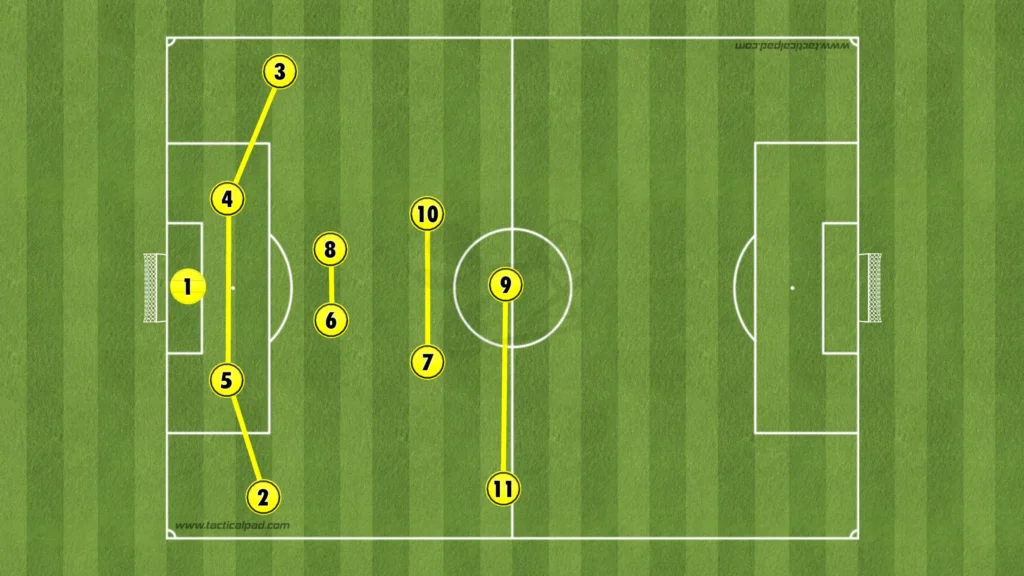
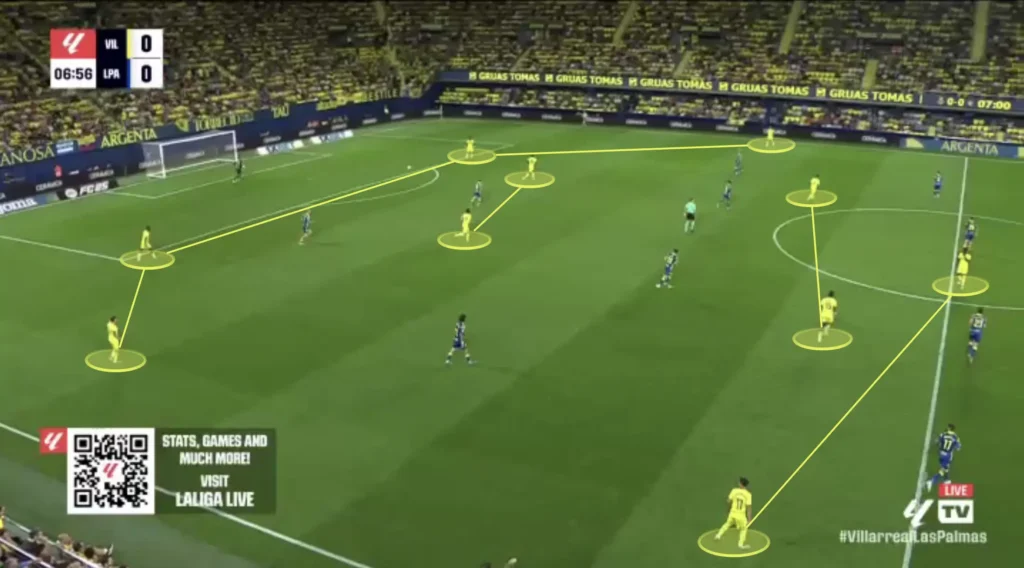
The seven building players will work together to beat the initial press and the four attackers will cooperate to create goalscoring opportunities. Marcelino mainly wants to beat the press by finding an attacking midfielder in the space between the opposition’s defense and midfield, who can bounce the ball to a holding midfielder, who then can progress the ball forward. When Villarreal beat the press, the attackers will immediately make runs in behind, looking to quickly exploit the holes in the opposition’s backline.
The Villarreal players are also not afraid to be more direct in the low build-up. If the opposition comes up and presses man-to-man, there will be numerical equality up top with Villarreal’s attackers against the opposition defenders. The goalkeeper will sometimes find an early longer ball up to the attackers, aiming to win 2v2 or 3v3 situations. The Villarreal attackers have good individual quality and will often win these battles to create goalscoring opportunities.
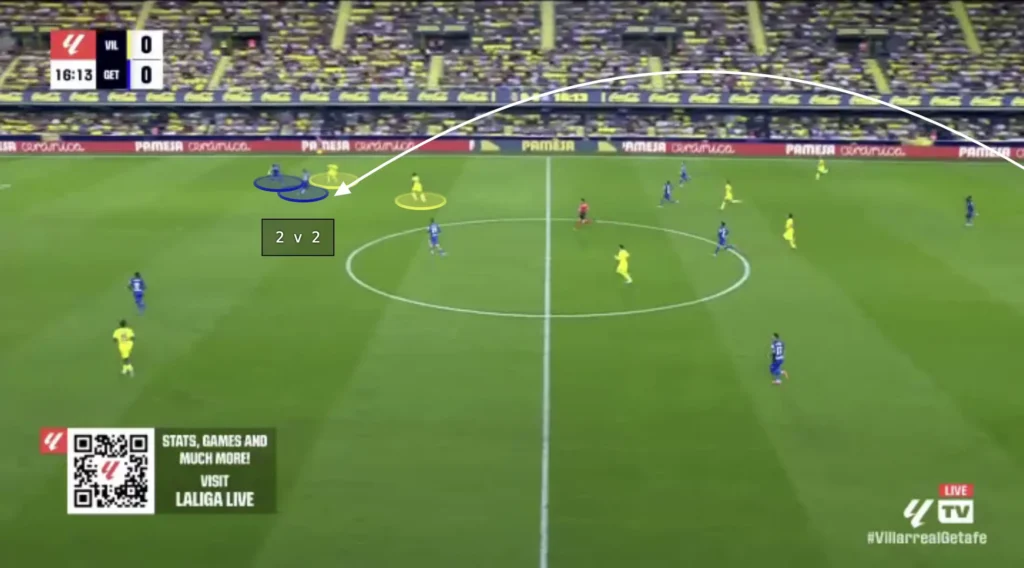
High Build-up
In the high build-up, Marcelino wants the left-back to push up as a left-winger while the right-back comes in next to the center-backs to create a back three.
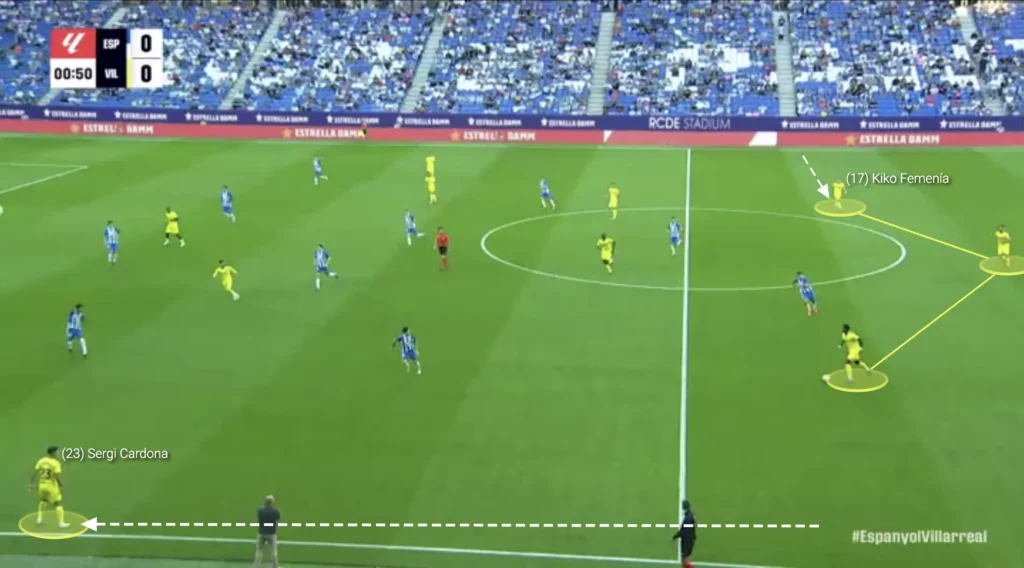
This puts Villarreal in a 1-3-2-2-3 formation.

Building up in a 1-3-2-2-3 formation focuses on creating numerical superiority in the midfield while maintaining width through the winger. The three center-backs provide a solid defensive base, with the two wide center-backs stretching the opposition’s press, creating space for the wingers to push up and occupy the flanks. In midfield, the double pivot provides passing options and ensures control in the center, while the attacking midfielders stay high and centrally, ready to exploit any gaps in the opposition’s defense.
Marcelino usually wants the two holding midfielders to be in different lines during the build-up. This is crucial for creating passing lanes and disrupting the opposition’s defensive structure.
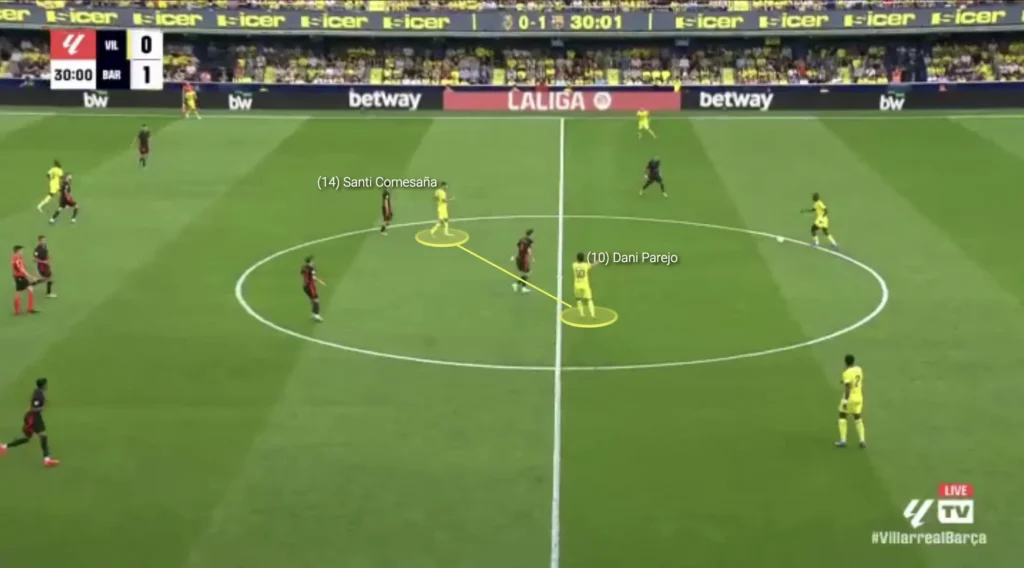
When the holding midfielders are staggered—one slightly ahead of the other—it forces the opposition’s attackers to make difficult decisions on who to block off, opening up space for the team to advance the ball. This layered positioning also enhances ball circulation by providing multiple angles for passing, reducing the risk of predictable or intercepted passes. The holding midfielders can play between themselves, allowing them to find third-man combinations to beat the opposition’s first line of pressure.
Rotations and Fluidity
The Villarreal players constantly rotate during the build-up. The team adopts a dynamic approach, shifting between formations to create numerical advantages and exploit spaces. Marcelino’s focus is always to get the players into their best positions, where they can make the most out of their individual skills. He emphasizes versatility, with players interchanging positions seamlessly to maintain possession and disrupt the opposition’s defensive structure. This flexibility creates numerical superiorities in different areas, allowing Villarreal to bypass the opposition’s press while maintaining control.
One of the holding midfielders will, for example, often move up into a number-ten position, creating a 1-3-1-5-1 formation. This rotation gives Villarreal more players higher up the pitch and can help break down teams who defend deep in a low-block.
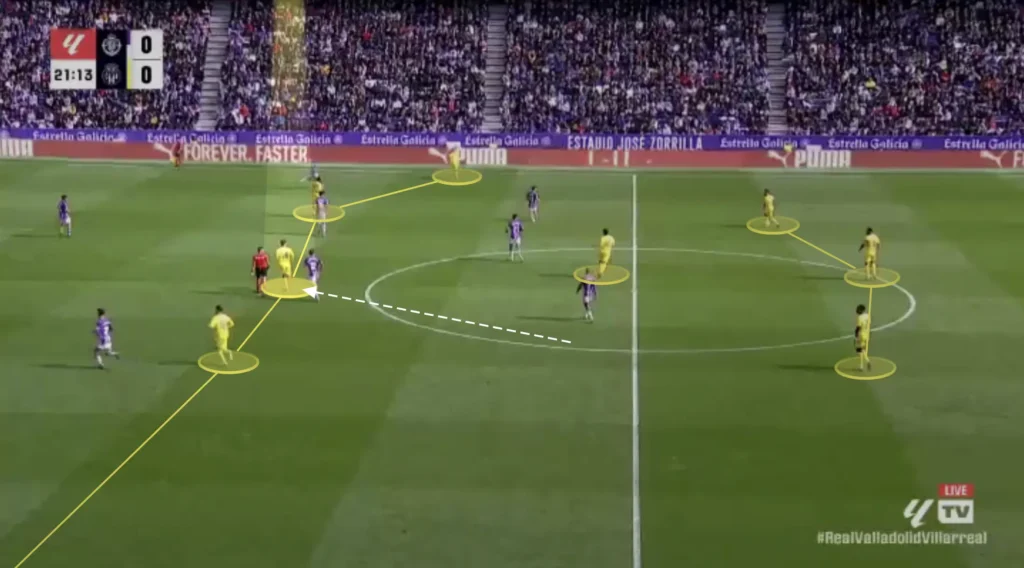
Numerical Advantages in the Middle
Regardless of the structure, Villarreal will have many players in the center. Marcelino usually has a winger wide on each side and positions the remaining eight players in the middle.
Having only the two wingers out wide and the rest in the middle creates more options in the center and less space between the players. Marcelino likes this because he prioritizes playing through the middle. He needs one player out wide to pull the opposition apart while the rest create numerical advantages in the midfield areas.
When a team outnumbers the opposition in the midfield, it can more easily retain the ball, exploit spaces, and progress the ball through the center. Villarreal will often progress the ball through quick central passes between the midfielders, beating the opposition’s press and exploiting gaps in the defense.
Another purpose for keeping many players in the middle is to shorten the distance between them. This shortens the length of the passes, which naturally shortens the time between passes. This means the opposition players will have less time to push up and press, giving the Villarreal players more time and control.
Rest-Defence
Marcelino also wants many players close to the center to create a good rest-defence structure. Rest-defence in football refers to a team’s defensive organization and structure when they have possession of the ball, specifically aimed at being prepared to defend immediately if they lose it. A good rest-defence structure is crucial for maintaining balance and preventing counterattacks when the team is in possession.
Having many players in the middle and close to the ball gives Villarreal a good rest-defence, since it allows more players to counterpress when Villarreal lose the ball. When losing possession, the four or five Villarreal players closest will immediately jump on the opposition player with the ball and close the distance to cut off any passing lanes. This approach disrupts the opponent’s transition from defense to attack, forcing errors and creating opportunities to regain control of the ball.
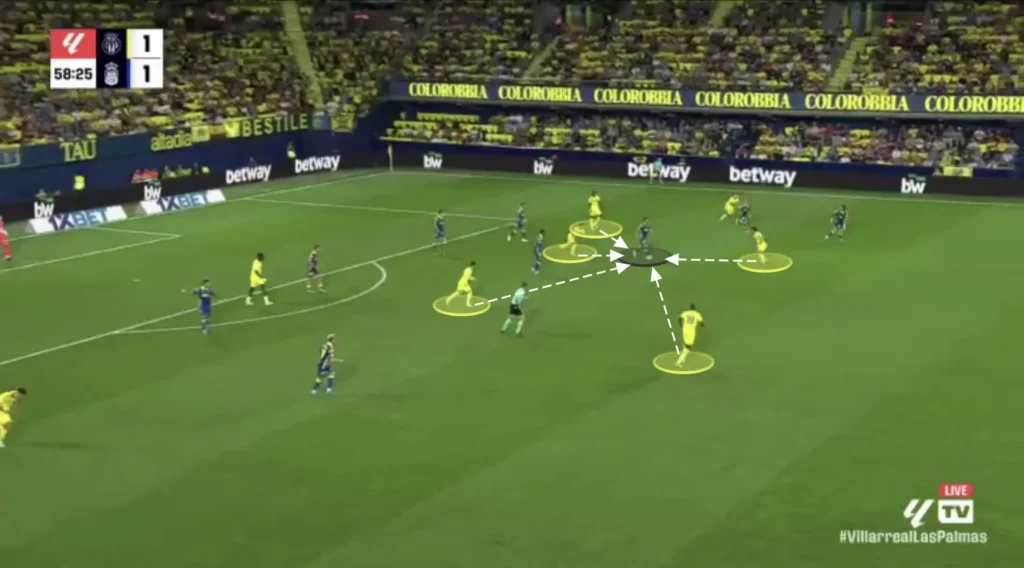
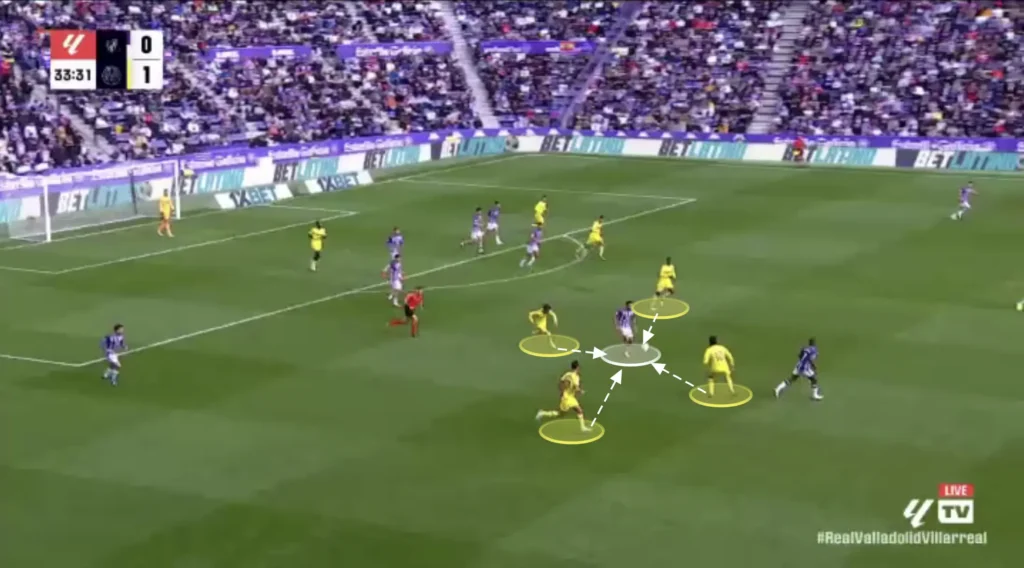
Counterpressing like this keeps Villarreal on the front foot, allowing them to dominate possession and create more scoring opportunities. However, it requires exceptional fitness, tactical discipline, and teamwork.
High Backline
A massive aspect of Villarreal’s high build-up is to have the defenders high up and close to the center. This helps in the counterpress because they get closer to the midfield. Having more players close to the center who can win the ball back makes it difficult for the opposition to do anything when they win possession. Furthermore, the high backline shortens the distance between players, shortening the time and length of the passes and preventing the opposition from pushing up their defense.
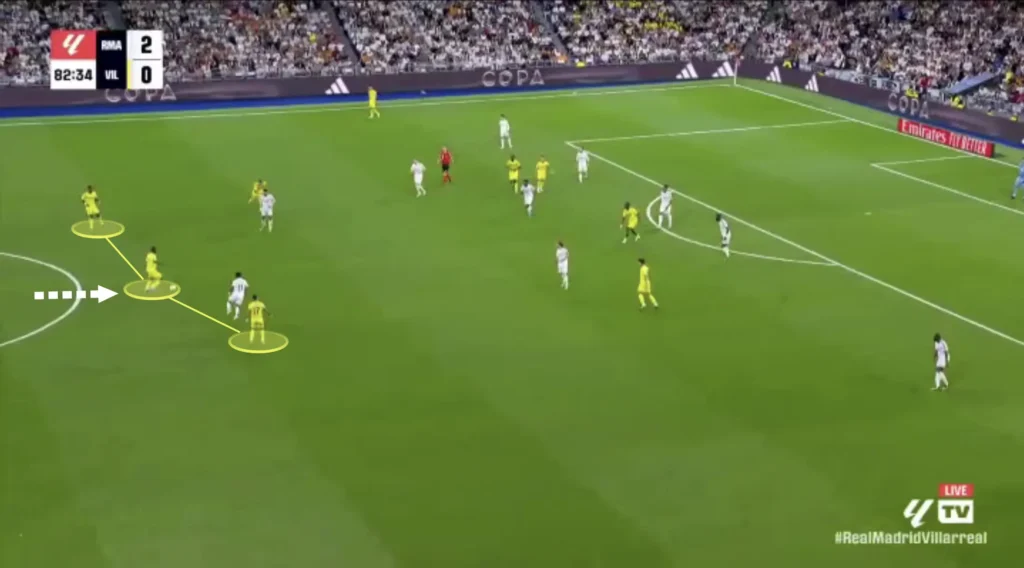
Third-man
Marcelino wants his team to play through the opposition when possible. One vital tool that they often use is the third-man principle. The third-man principle is a tactical concept used to create and exploit space by involving a third player in a passing sequence.
It typically works by having Player A pass the ball to Player B, who then quickly relays it to the free Player C. An opponent will block the pass from Player A to Player C, but the pass from Player B to Player C will be open, which is why he is needed in this passing combination.
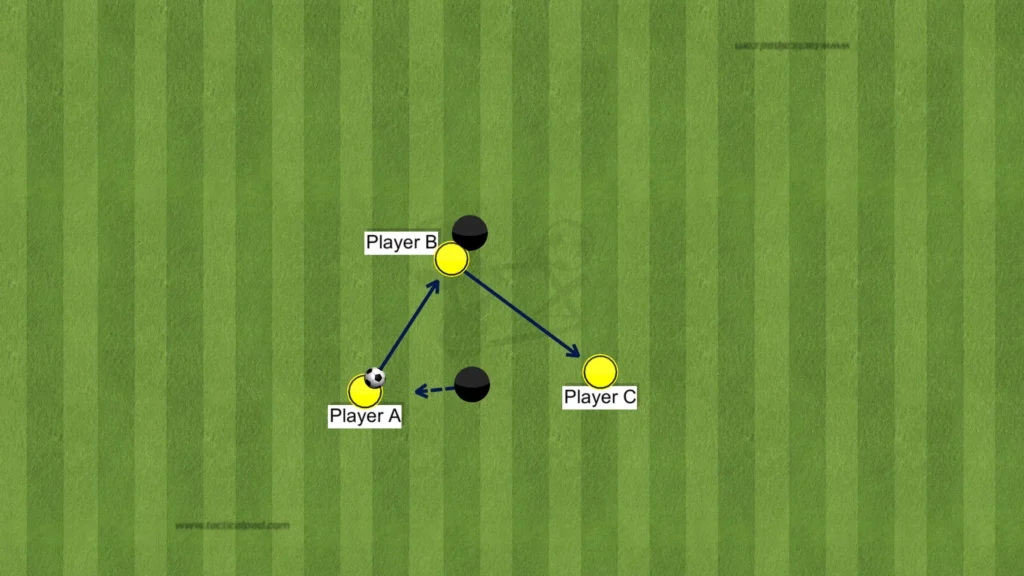
This movement often bypasses an opponent’s pressing line and opens up space, allowing the team to advance the ball more effectively. The key to the third-man principle is timing and positioning, as the third player must anticipate the play, position themselves advantageously, and receive the ball in a manner that breaks the opposition’s defensive structure. This principle is integral to many modern football strategies, promoting fluidity, quick decision-making, and dynamic attacking play.
Villarreal will, for example, use third-man combinations involving the attacking midfielders to find an open holding midfielder when an opposition attacker presses a Villarreal defender.
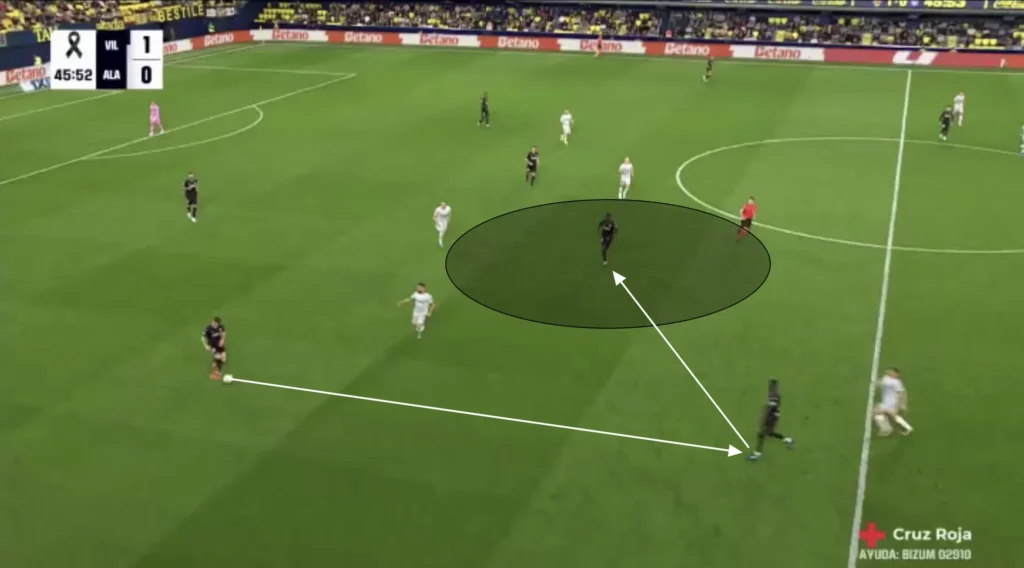
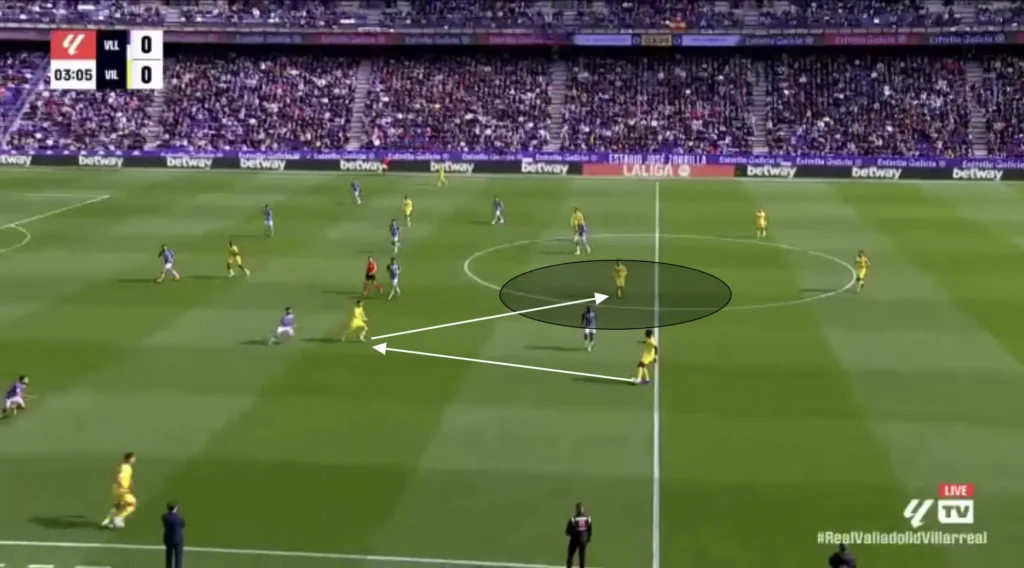
Finding the Pockets
Marcelino’s players always try to find the attacking midfielders in the pockets. These “pockets” refer to the spaces between the opposition’s defensive and midfield lines, where the attacking midfielders can receive the ball in more advanced positions.
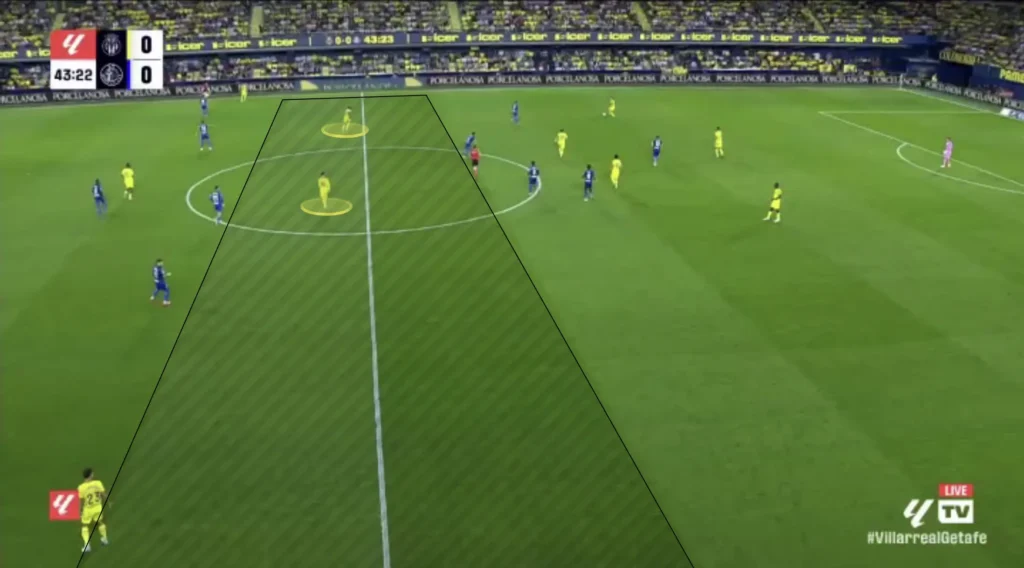
By positioning themselves intelligently in these pockets, the attacking midfielders can turn quickly and face the opposition’s goal, creating opportunities for through balls, driving runs, or direct shots. This positioning forces the opposition to make difficult decisions. If an opposition defender steps up and closes down the attacking midfielder, he potentially leaves space behind. However, if he stays back, he allows the attacking midfielder time on the ball. The Villarreal defenders and holding midfielders will often look for diagonal passes, breaking the opposition lines and finding the attacking midfielders who can turn and drive at the defense.
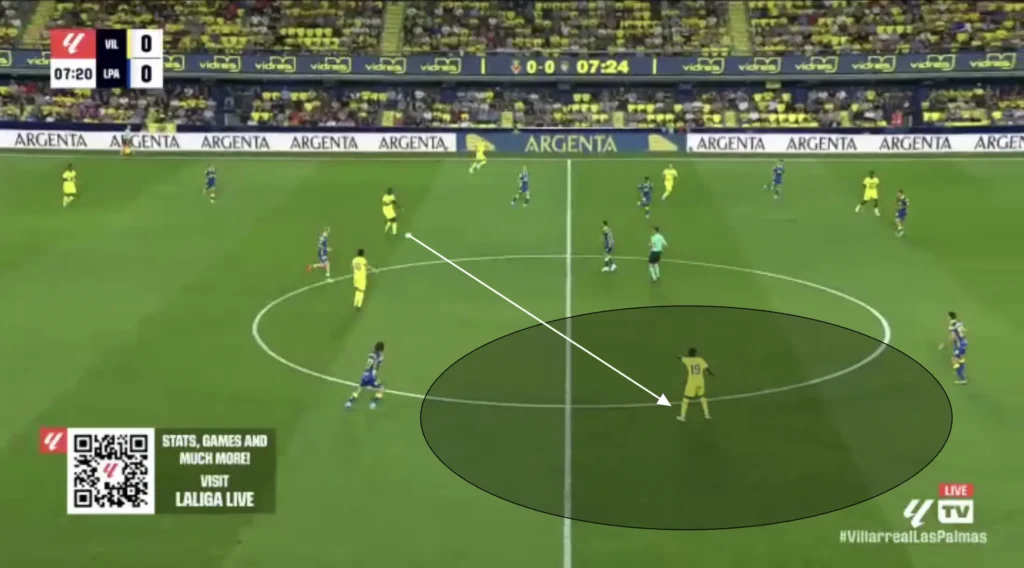
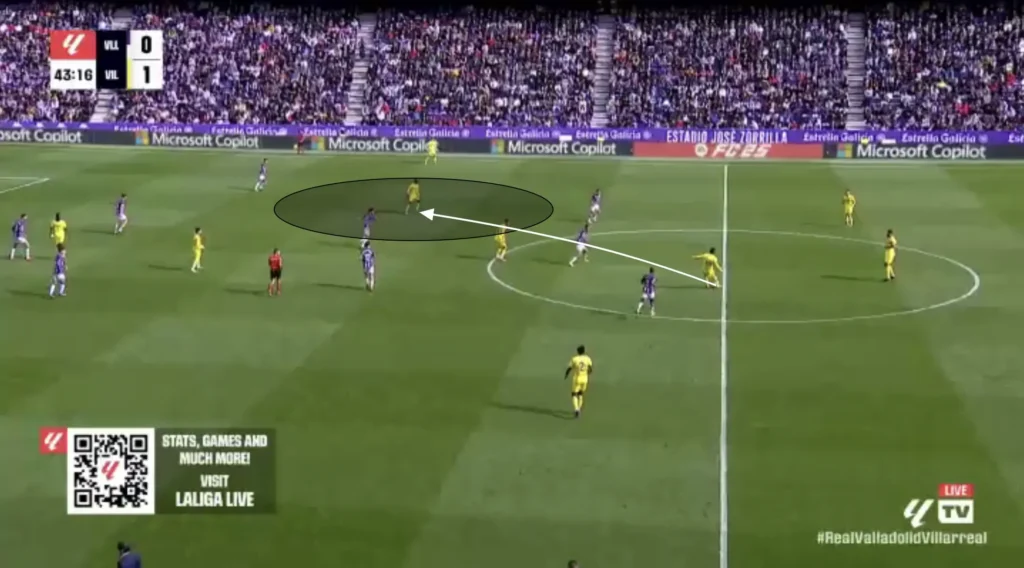
Villarreal will also use third-man combinations involving the striker to find players in these spaces. A defender or holding midfielder can play a straight pass to the striker, who can find an attacking midfielder in the pocket with a simple one-touch pass.
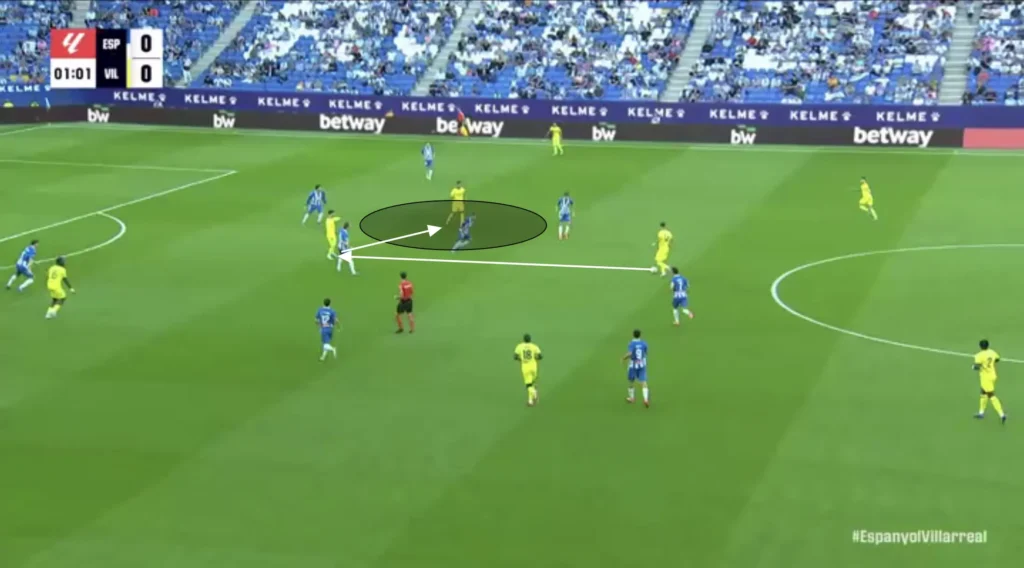
Finding these pockets is crucial for maintaining fluidity in attack and ensuring that the team can progress the ball effectively through the middle of the pitch.
Dropping Outside
When the opposition defends very compactly and does not allow the attacking midfielders to be found in the pockets, Villarreal’s attacking midfielders can drop outside to receive the ball there instead. They will wait for the opposition’s wide midfielders to come into the middle and drop out into the space outside of them. The opposition center-backs and central midfielders rarely follow these runs, not wanting to open the space in the center. Additionally, the winger, who is positioned high and wide, will be pinning the opposition fullback, not allowing him to jump on the dropping attacking midfielder. This means that the attacking midfielder can receive the ball, turn, and progress the ball unopposed.
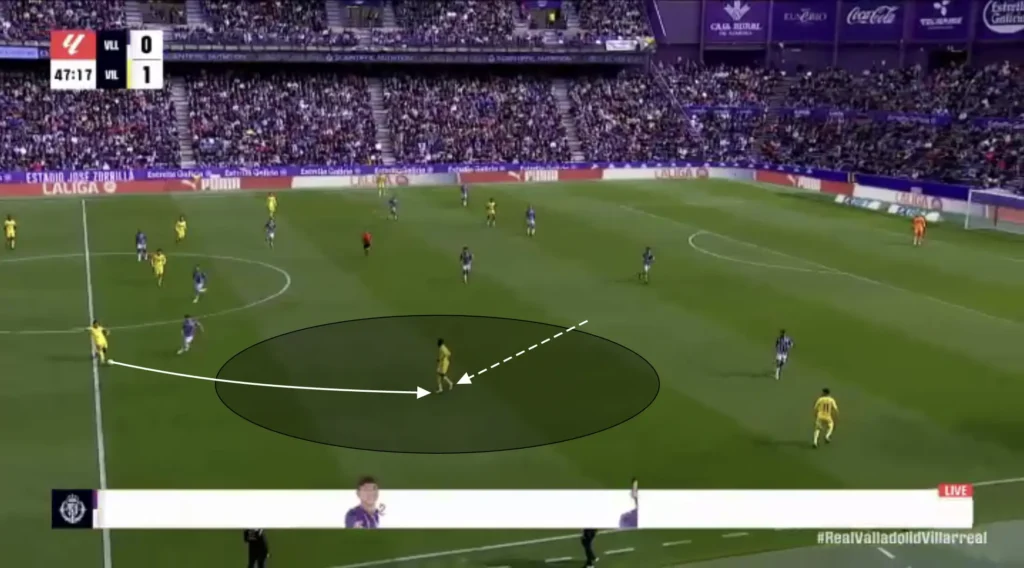
Attacking the Half-Space
Marcelino’s players usually look to create chances by attacking the space between the opposition center-back and fullback. They primarily do this from the wide areas with underlaps from the attacking midfielders. When the winger receives the ball out wide he will attract the opposition fullback. This opens the space between the fullback and the center-back, which allows Villarreal’s attacking midfielder to make the underlapping run into this space. The ball can be played to the underlapping player, who can cross the ball into the box or attack his defender in a 1v1 situation.
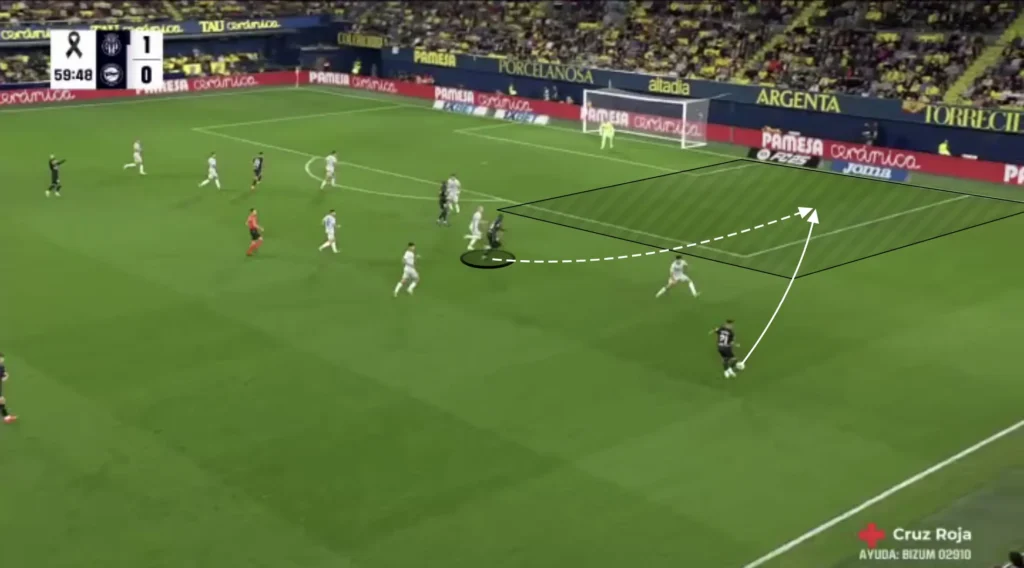
Additionally, the winger does not have to play the ball to the underlapping player. The run from the Villarreal midfielder will often drag away an opposition defensive midfielder, which opens the space inside. The winger can take the ball inside and shoot or find a pass to a free player in front of the backline.
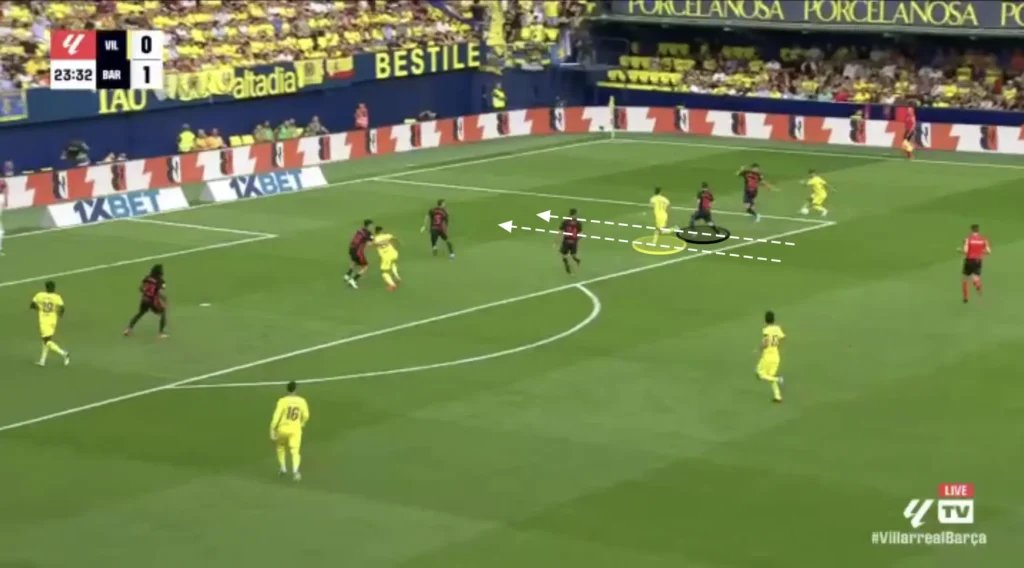
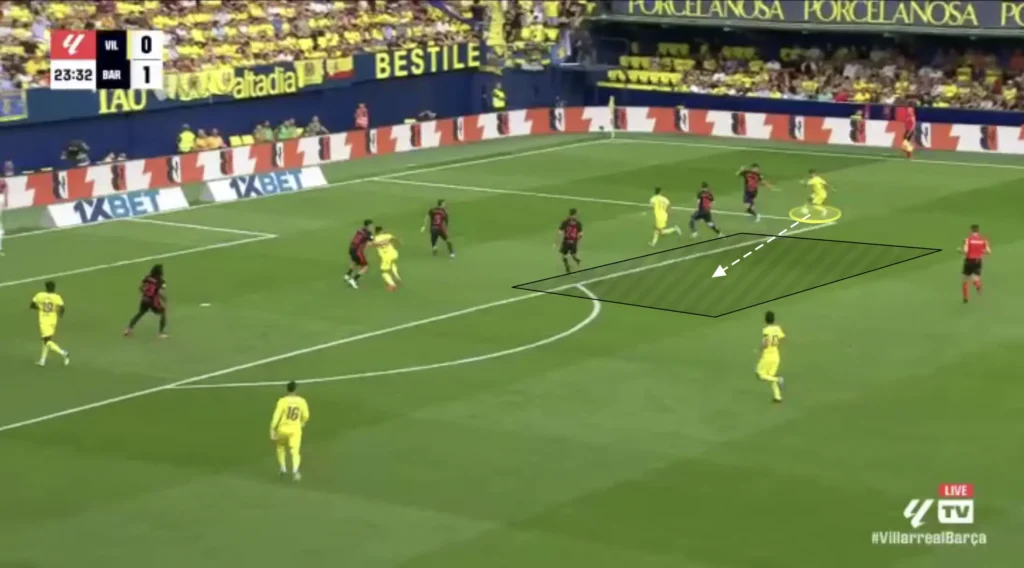
Counterattacks
Villarreal’s counterattacks are a key element of their tactical approach under Marcelino. The team is highly organized defensively, setting up with a compact, disciplined shape that allows them to quickly transition from defense to attack. Once they win the ball back, Villarreal players waste no time moving it forward with precision and urgency. Midfielders play quick, vertical passes to exploit the spaces left by an advancing opposition, often aiming for wide players or strikers who position themselves to break into the attacking third. The pace and timing of these counterattacks are crucial; Villarreal’s players understand when to push forward aggressively and when to hold back, making them highly effective at creating scoring chances out of transitional moments.
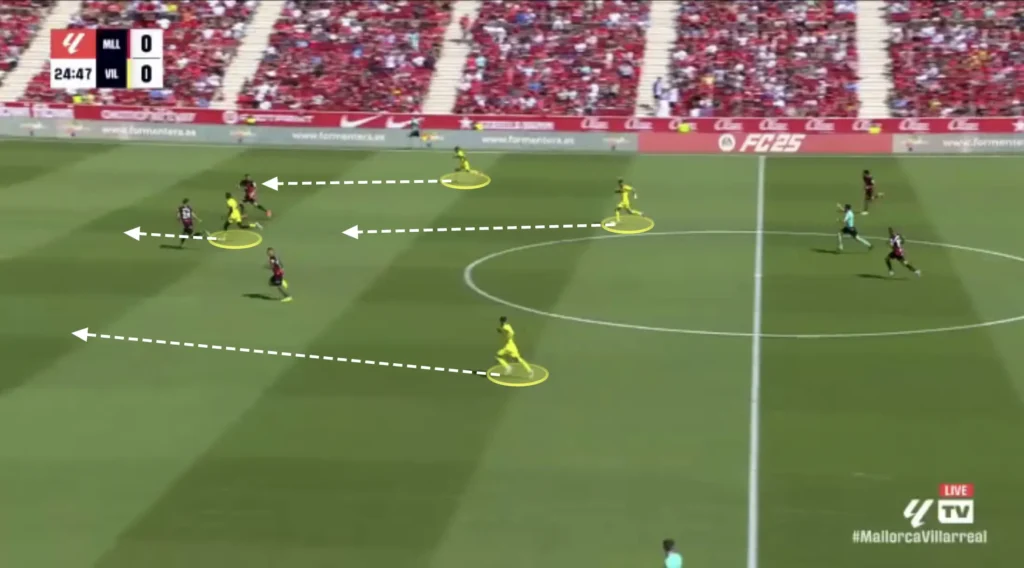
Defending
Villarreal’s base formation when defending is the 1-4-4-2 formation. They look to set up in a mid-block, always trying to close the center and force the opposition out wide.
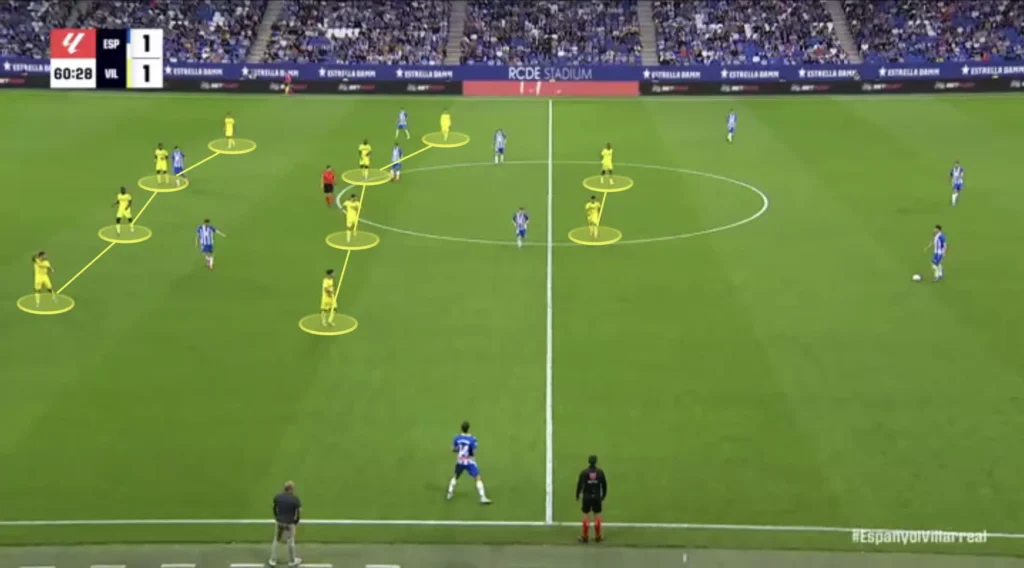
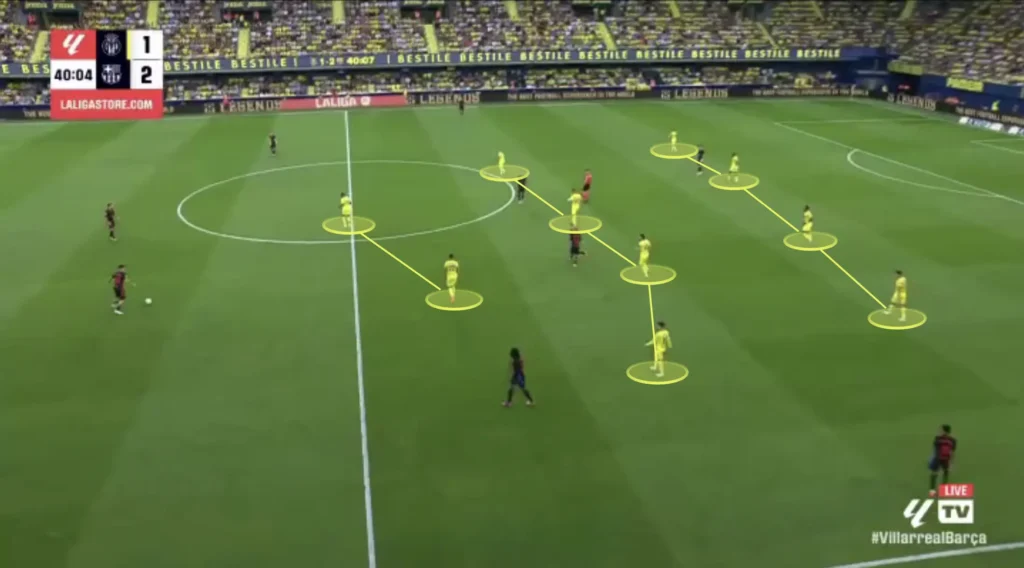
Defending in the 1-4-4-2 formation is all about balance, compactness, and discipline. The team defends in two compact lines of four, with the forwards positioned ahead of the midfield. The two forwards play a crucial role, not only as the first line of defense but also in initiating the team’s pressing strategy. Marcelino wants his team to stay compact without dropping too low, preferably closing the space between the midfield and backline.
Work Rate
Villarreal’s work rate when defending is exceptional, defined by relentless energy and discipline. Under Marcelino, the team is organized and compact, with every player contributing to defensive duties. The midfield and forward lines press with intensity, closing down spaces and forcing opponents into uncomfortable positions. Villarreal’s backline remains focused, consistently tracking runs and maintaining their shape. When a defender breaks out of shape to put pressure on an opposition player, a midfielder will always drop into the backline to cover for his teammate.
Here, there is a 1v1 situation on the wing. Two Villarreal players have come back and are behind the defender to provide cover if he gets beat.
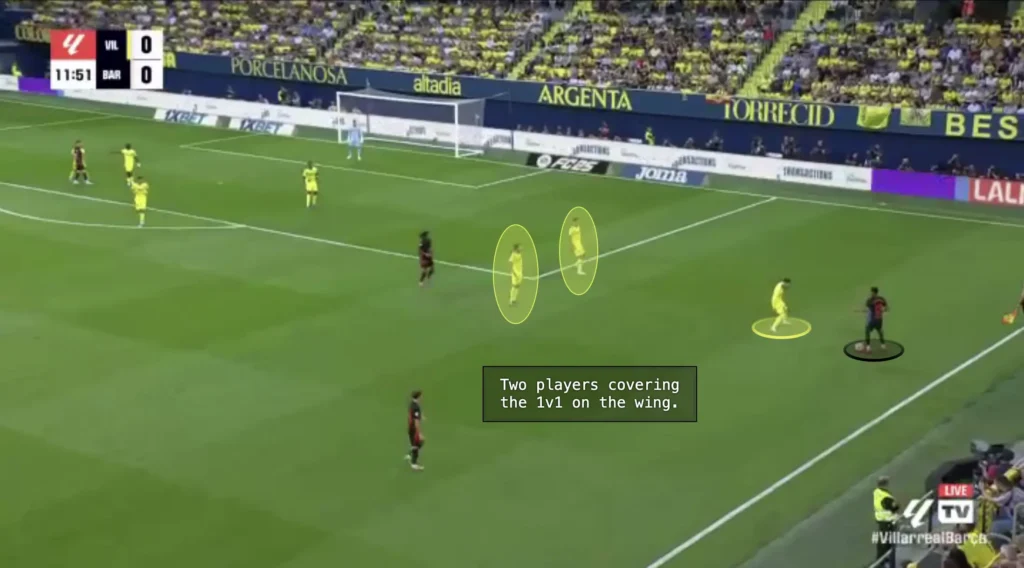
This compactness ensures that the team stays solid defensively, making it harder for the opposition to break through with wide attacks.
Squeezing the Pitch
To prevent his team from becoming too low when defending, Marcelino wants his team to squeeze the pitch. This means constantly pushing the team up as much as possible. Every time the opponent plays a slow, sideways pass or a back pass, Villarreal’s first line of pressure pushes up, with the rest of the team following to stay compact. When the next pass comes, they push up even more, forcing the opponent back even more.
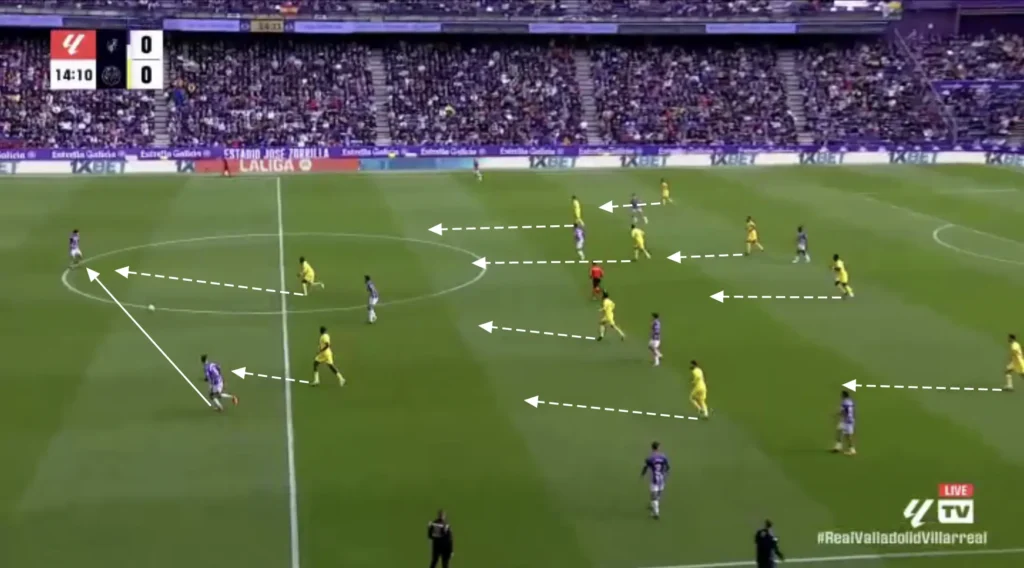
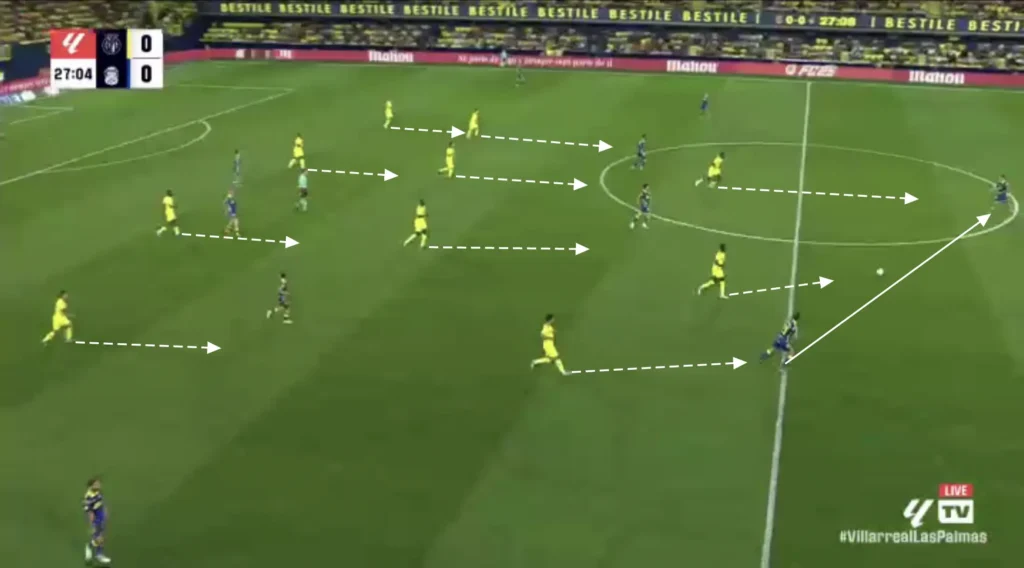
This approach keeps opponents under constant pressure, making it difficult for them to build rhythm or find space between the lines. It also pushes the opponent further away from the Villarreal goal, making it harder to create chances.
High Press
Villarreal, under Marcelino, often avoid pressing high up the pitch, preferring to stay compact and organized in a mid-block. However, in some games, they have applied high pressure, especially when they spot opportunities to disrupt the opposition’s build-up in key areas. Their pressing structure will depend on the opposition, but they primarily press in a 1-4-1-2-1-2 formation.
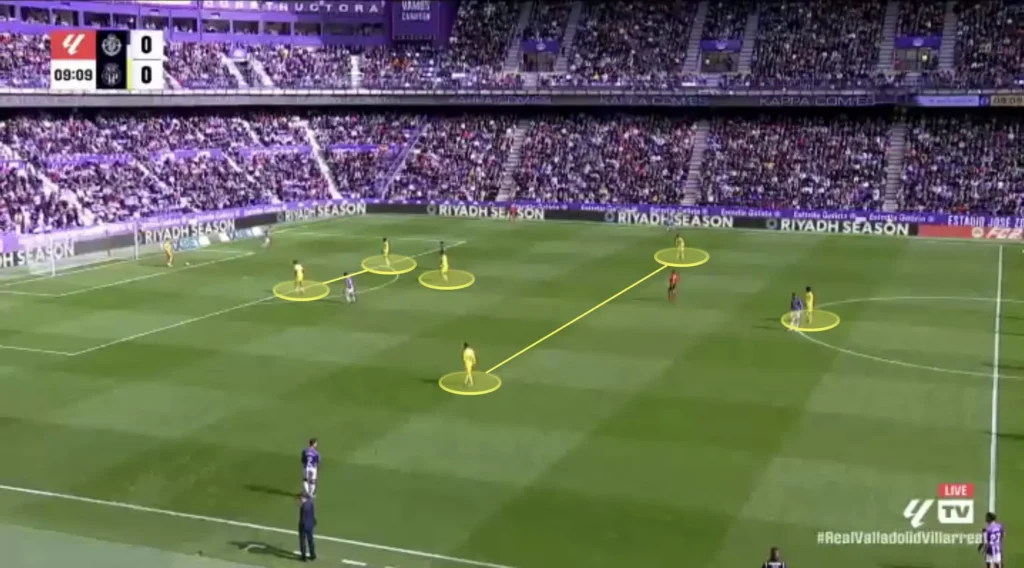
When the play starts, the strikers will try to close off one opposition center-back by making angled pressing runs, forcing the opposition to one side.
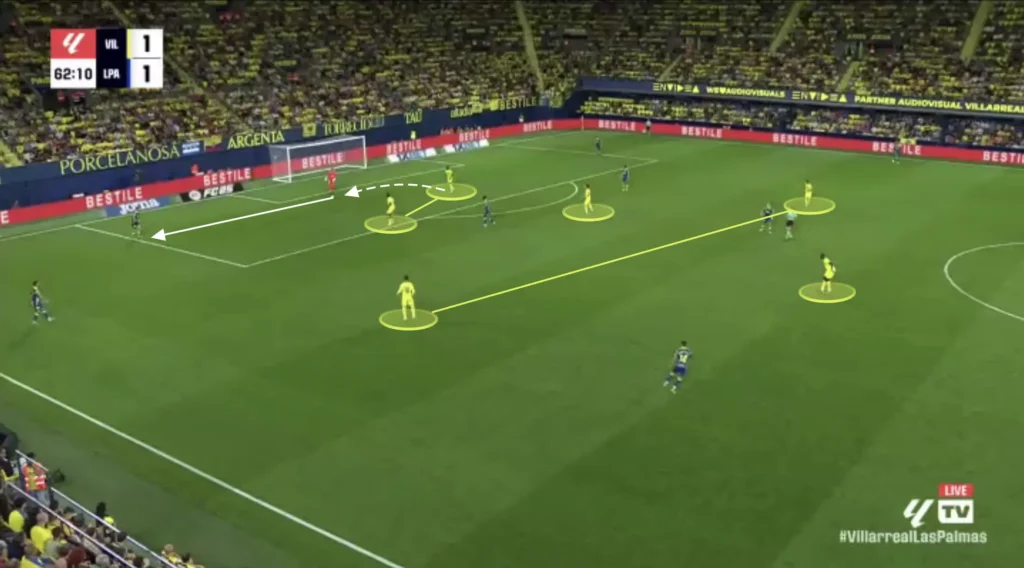
Villarreal will be aggressive and intensely press to win the ball when it gets played out to one of the opposition fullbacks. The ball-side wide midfielder will push up on the ball-side fullback, with the rest of the midfield shifting across to close down any passing options.
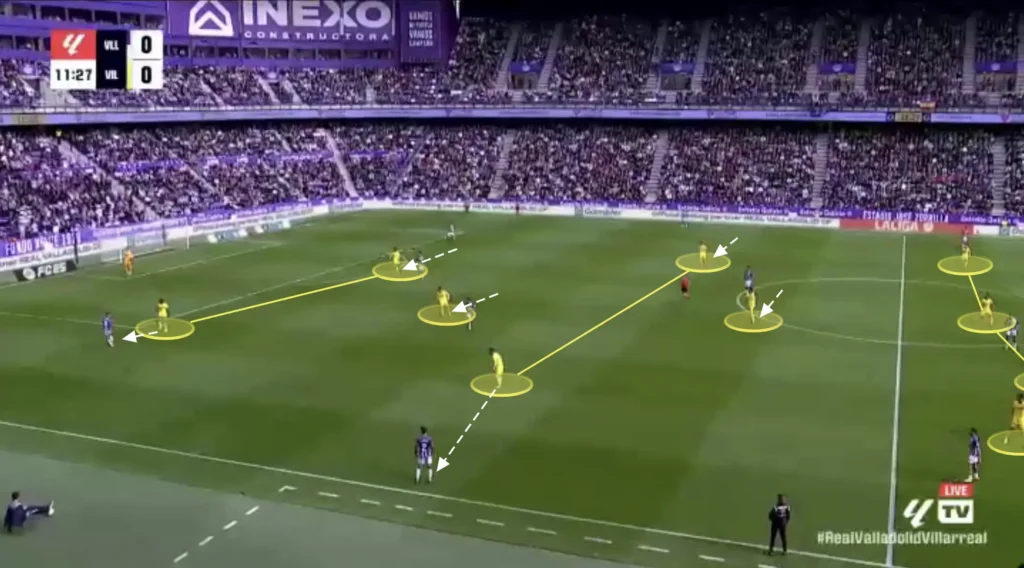
The wide midfielder will press from the inside, closing any passes into the middle. The ball-side striker will try to stop the opposition from switching sides by closing the pass to the ball-side center-back, while the Villarreal midfielders, who have shifted across, will push up on the opposition midfielders. This gives the opposition fullback very few passing options and often triggers a rushed long ball. The benefit of this system is that it gives the Villarreal backline a numerical advantage against the opposition attackers, which means they usually win the long balls.
Final Thoughts
In conclusion, this tactical analysis of Marcelino’s Villarreal CF highlights a team built on structure, discipline, and intelligent transitions. Marcelino’s approach emphasizes a well-organized defense, sharp counterattacks, and efficient use of space, making Villarreal both resilient at the back and dangerous going forward.
Under Marcelino’s leadership, Villarreal’s tactical setup is not only adaptable but also consistent in executing his strategic vision. By blending defensive solidity with quick offensive transitions, Marcelino has crafted a team that can compete with intensity and purpose. As Villarreal continues to progress, Marcelino’s tactical blueprint is sure to leave a lasting impact, shaping the team’s identity and paving the way for future success.
